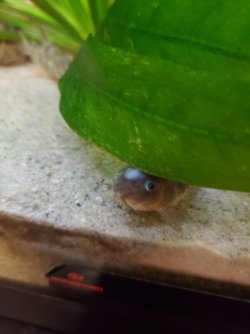outofwater
Fish Addict
Hi everyone, long time. Hope everybody and their fishy friends are doing well.
Last week I noticed a spot on one of my cory, and thought maybe it had scratched herself on something. As I'm getting ready for water change I oticed that now there are two spots, look like lesions, and something of a discolored spot on the top of her tail fin.
Video here. https://www.bitchute.com/video/SbGkJONOkwWB/
Thinking of doing salt baths, any other suggestions as to what it could be and how to treat it?
29 g tank.
just tested water, prior to water change:
All tests done with API water test kit.
Tank is stable, over 2 years running, no new fish, plants or deco introduced in the last 12 months.
All fish get along. I spent a good 30 minutes looking at their interactions earlier today and didn't see anyone getting close to her, try to nip or anything like that. And she's swimming, eating and acting her usual self. She's not shying away from the others either.
Tankmates:
13 neon tetras
3 ottos
4 other cories (2 albino and 2 peppered)
Thanks for any insight you may provide.
Last week I noticed a spot on one of my cory, and thought maybe it had scratched herself on something. As I'm getting ready for water change I oticed that now there are two spots, look like lesions, and something of a discolored spot on the top of her tail fin.
Video here. https://www.bitchute.com/video/SbGkJONOkwWB/
Thinking of doing salt baths, any other suggestions as to what it could be and how to treat it?
29 g tank.
just tested water, prior to water change:
- Ph. 6
- Nitrite. 0
- Ammonia. 0
- Nitrates. Somewhere between 5 and 10.
All tests done with API water test kit.
Tank is stable, over 2 years running, no new fish, plants or deco introduced in the last 12 months.
All fish get along. I spent a good 30 minutes looking at their interactions earlier today and didn't see anyone getting close to her, try to nip or anything like that. And she's swimming, eating and acting her usual self. She's not shying away from the others either.
Tankmates:
13 neon tetras
3 ottos
4 other cories (2 albino and 2 peppered)
Thanks for any insight you may provide.



